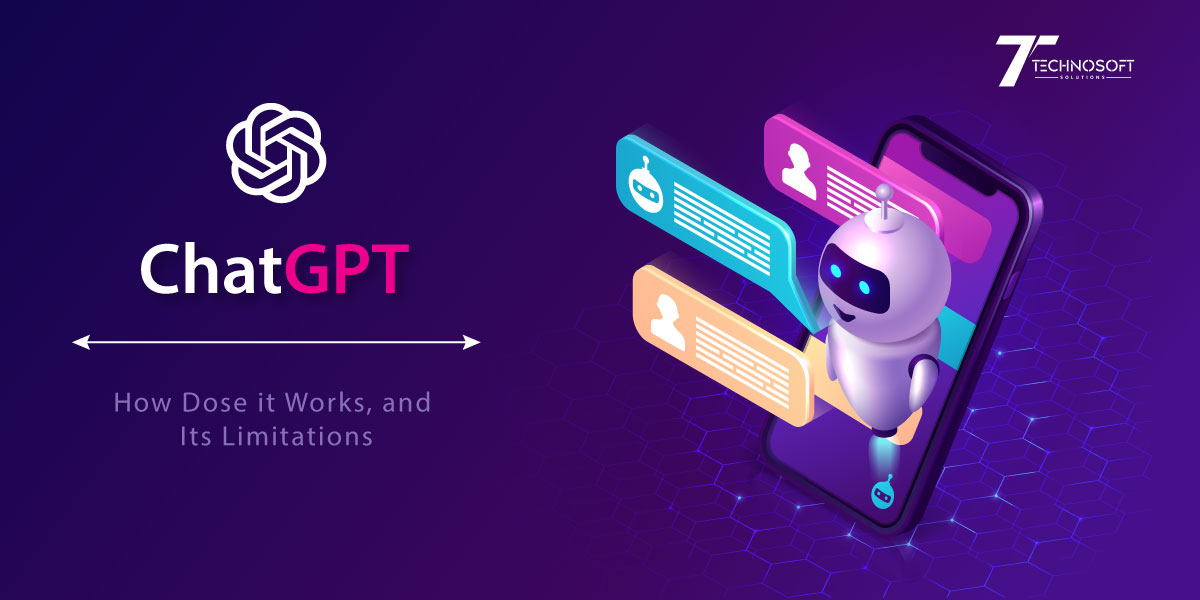The emergence of artificial intelligence has revolutionized the way we communicate, work, and access information. Among these AI advancements, language models have gained significant popularity in recent years. ChatGPT, a prominent example of such models, has captured the attention of researchers, developers, and users alike. In this article, we will delve into the world of ChatGPT, exploring its creation, capabilities, and limitations, as well as its potential future applications.
Who Created ChatGPT?
ChatGPT is a groundbreaking language model developed by OpenAI, a research organization dedicated to advancing the field of artificial intelligence. Founded by Elon Musk, Sam Altman, and other prominent tech visionaries, OpenAI aims to ensure that AI benefits all of humanity. ChatGPT, based on the GPT-4 architecture, is a testament to OpenAI’s commitment to developing cutting-edge AI technologies. It demonstrates remarkable natural language understanding and generation capabilities, making it an invaluable tool for a wide range of applications.
How Does It Work?
ChatGPT operates based on a technique known as deep learning, specifically using a transformer architecture. The model is trained on vast amounts of text data, allowing it to learn complex patterns and relationships within the language. By analyzing this extensive corpus, ChatGPT can generate contextually relevant and coherent responses to user inputs.
The training process involves a method called unsupervised learning, wherein the model predicts the next word in a sentence by considering the words that have come before it. Through this iterative process, ChatGPT develops its understanding of grammar, syntax, semantics, and even some factual knowledge.
When a user interacts with ChatGPT, they provide an input in the form of text. The model then processes this input, using its intricate knowledge of language to generate a contextually appropriate response. ChatGPT’s ability to understand and generate human-like text makes it an incredibly versatile tool for a wide range of applications, from customer support to content creation.
20 Limitations Of ChatGPT In 2023:
- Sense limits:
While ChatGPT has a remarkable understanding of language, it sometimes struggles with common sense reasoning. This can lead to responses that, although grammatically correct, may not make logical sense or align with real-world knowledge. For example, it may suggest an absurd solution to a problem, simply because it fits the language pattern, without considering the practical implications. - Emotional gaps:
ChatGPT’s ability to comprehend and convey emotions is limited. It may not always recognize the emotional context or tone of a conversation, which can result in responses that appear insensitive or out of touch with the user’s feelings. For instance, it might respond to a user expressing frustration with a seemingly indifferent or unrelated answer, further exacerbating the user’s dissatisfaction. - Context grasp:
Although ChatGPT can often generate contextually relevant responses, it may occasionally struggle to fully understand the nuances of a conversation. This can lead to misunderstandings or responses that seem slightly off-base. For example, if a user asks a question with subtle sarcasm, ChatGPT might not recognize the sarcasm and provide a response based on a literal interpretation of the question. - Short content:
ChatGPT’s proficiency in generating long, structured content is limited. It is more adept at handling shorter responses, but as the length of the content increases, the model may lose coherence or stray from the original topic. For example, when tasked with writing a detailed essay or report, ChatGPT may start strong but eventually digress into unrelated topics or become repetitive. - Single-tasking:
Unlike humans, ChatGPT is not built for multitasking. It processes one input at a time and does not maintain a continuous memory of past interactions. As a result, users may need to provide additional context or reminders when engaging in more complex or ongoing conversations. For instance, if a user is discussing multiple topics or issues over several messages, they may need to explicitly reference previous points to ensure ChatGPT remains on track and provides relevant responses.
As we delve further into the limitations of ChatGPT, let’s explore additional areas where this AI language model may face challenges or exhibit shortcomings. - Eco-restraints:
The computational power required for ChatGPT to function effectively can have environmental implications. The energy consumption associated with training and running such large-scale models contributes to a larger carbon footprint, raising sustainability concerns for AI-driven technologies. - Dated facts:
ChatGPT’s knowledge is based on the text data it was trained on, which has a cut-off date. As a result, the model may be unaware of recent developments or changes in certain fields, leading to responses that might be outdated or no longer accurate. - Erroneous recall:
While ChatGPT possesses a vast amount of information, it can sometimes provide incorrect or inconsistent facts. This is due to the model learning from a diverse range of sources, some of which might contain conflicting or inaccurate information. - Qualitative struggles:
ChatGPT excels at handling quantitative data and structured information, but it may face difficulties when dealing with more abstract or qualitative concepts. This limitation can result in responses that lack depth or fail to address the nuances of certain subjects, particularly when it comes to philosophical or artistic discussions. - Language barriers:
Although ChatGPT has been trained on a diverse array of languages, its proficiency in some languages may be limited compared to others. This can lead to less accurate or coherent responses for users interacting with the model in less-supported languages, as well as potential misinterpretations or miscommunications in multilingual contexts. - Ethical quandaries:
The use of AI-driven language models like ChatGPT raises ethical questions, such as potential misuse or abuse for spreading misinformation, generating harmful content, or manipulating public opinion. These concerns highlight the importance of responsible development and deployment of AI technologies. - Plagiarism risk:
ChatGPT’s ability to generate human-like text can sometimes result in content that closely resembles existing sources. This raises concerns about potential plagiarism or copyright infringement, particularly when using the model for content creation or research purposes. - Unimodal limits:
ChatGPT is primarily designed to process and generate text-based data. Its capabilities are limited when it comes to handling other types of input or output, such as images, audio, or video. This restricts its applicability in more diverse or multimodal contexts. - Length constraints:
ChatGPT has limitations in terms of input and output length. Extremely long inputs may be truncated or not fully processed, leading to incomplete or less accurate responses. Similarly, generating excessively long outputs may result in diminishing coherence or quality as the response progresses. - Bias presence:
As ChatGPT learns from a wide range of text sources, it may inadvertently absorb and perpetuate biases present in the data. This can manifest in the form of biased responses, stereotypes, or offensive content, which raises concerns about the fairness and ethical implications of using such models in various applications. - Customization limits:
ChatGPT offers limited options for users to fine-tune the model to suit their specific needs or preferences. Although some level of customization is possible, it may not be sufficient for certain use cases, requiring further development or specialized models to address unique requirements. - Power demands:
Running ChatGPT, particularly when using more advanced features or processing large volumes of data, can consume significant computational resources. This may present challenges for users with limited processing power or those concerned about the environmental impact of energy-intensive computing. - Knowledge ceiling:
ChatGPT’s knowledge is inherently capped by the data it was trained on. While it can provide valuable insights and information in many areas, there will always be gaps in its knowledge, particularly in emerging fields or rapidly evolving domains where new information is continuously being generated. - Accuracy hiccups:
ChatGPT may occasionally produce responses that are factually incorrect or inconsistent, either due to limitations in its training data or challenges in parsing and understanding complex inputs. Users should be cautious when relying on the model’s outputs for critical decision-making or research purposes. - Grammar pitfalls:
While ChatGPT is generally proficient in generating grammatically correct text, it may still make occasional errors, such as incorrect verb conjugations, misplaced punctuation, or awkward phrasing. These minor issues, although not detrimental to overall comprehension, can impact the perceived quality and professionalism of the generated content.
In conclusion
ChatGPT is an impressive AI language model developed by OpenAI that offers a wide range of applications, from customer support to content creation. Its deep learning capabilities and transformer architecture enable it to generate human-like text, making it a valuable tool in various domains. However, it is essential to recognize its limitations, such as common-sense reasoning, emotional understanding, and potential biases, among others.
As AI technology continues to evolve, it is crucial to address these limitations and concerns to ensure the responsible and ethical development and deployment of such models. By being aware of ChatGPT’s capabilities and shortcomings, users can make informed decisions when utilizing this powerful tool and adapt their expectations accordingly. Ultimately, ChatGPT serves as an exciting glimpse into the future of AI-driven language processing, opening up new possibilities and opportunities for innovation and advancement in the field.







